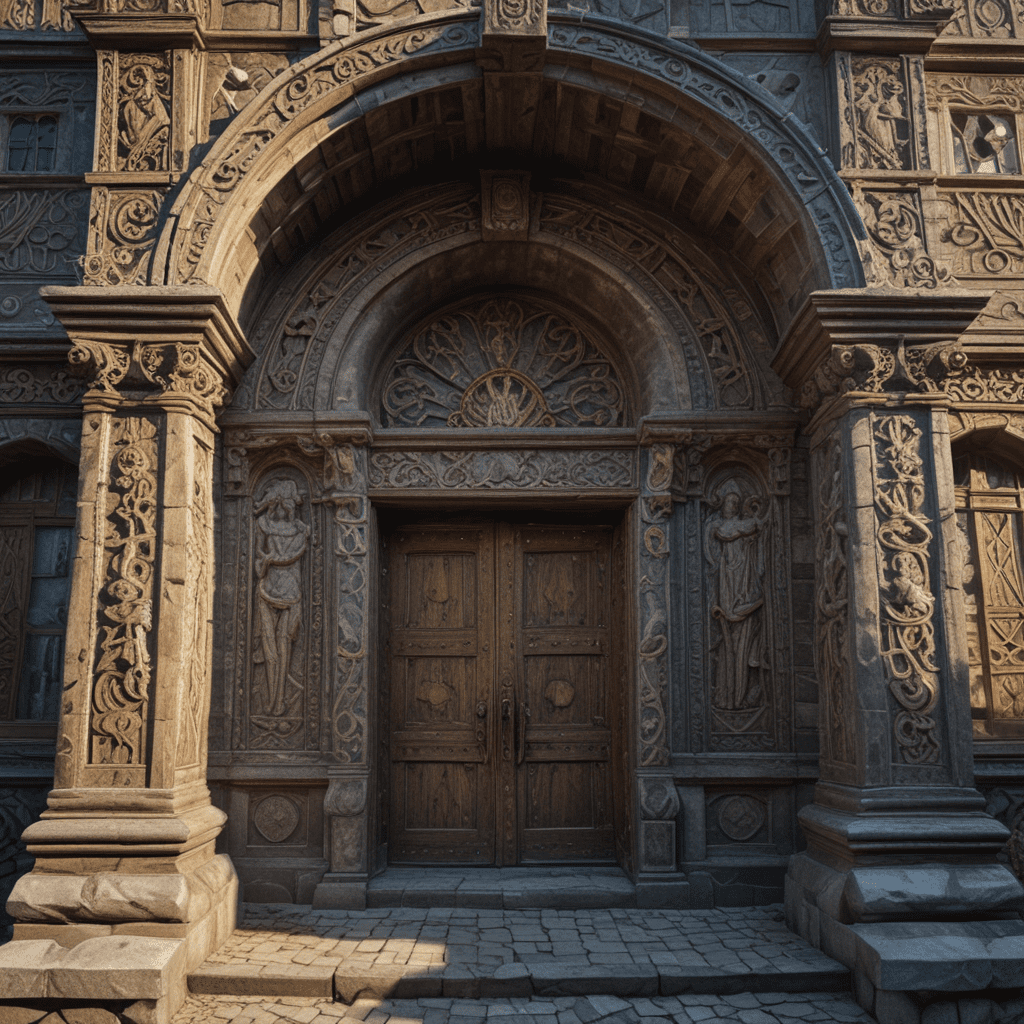The Influence of Slavic Mythology on Traditional Architecture
1. Introduction
Slavic mythology, a rich tapestry of beliefs, traditions, and folklore, has profoundly influenced the architectural practices and designs of Slavic cultures throughout history. This influence is evident in the concept of the dwelling as a sacred space, the use of symbolism and ornamentation, and the significance of rituals and ceremonies in architectural construction.
2. The Role of Slavic Mythology in Shaping Architectural Beliefs and Practices
Slavic mythology imbued architecture with profound spiritual and cosmological significance. Buildings were not merely structures for shelter; they were microcosms of the universe, reflecting the harmonious order of the cosmos. The dwelling was considered a sacred space, a place where the sacred and the mundane intertwined, protected from evil forces by protective spirits.
3. The Concept of the Dwelling as a Sacred Space
Slavic mythology held that the house was a living entity, a sanctuary for the family and a link between the physical world and the realm of spirits. It was believed that every house had a "domovoi," a benevolent spirit who guarded the home and its occupants from harm. Offerings were made to the domovoi to ensure his favor and protection.
4. The House as a Microcosm of the Universe
Slavic architecture reflected the belief that the house was a microcosm of the universe. The four corners of the house represented the four cardinal directions, while the roof symbolized the sky. Windows and doors were considered portals between the world of the living and the realm of spirits, and their placement and decoration were carefully considered.
5. The Influence of Totem Animals and Nature Spirits
Slavic mythology featured a rich pantheon of totem animals and nature spirits, each with its own protective and symbolic powers. These animals and spirits were often incorporated into architectural designs, from carvings on beams to intricate patterns on textiles. The presence of these elements invoked the protection and blessing of the spirits associated with them.
6. The Use of Symbolism and Ornamentation
Slavic architecture was adorned with a wealth of symbols and ornamentation, each with its own specific meaning and significance. Geometric patterns, such as the swastika, represented the sun and fertility. Animal motifs, like the horse and the rooster, symbolized strength and vigilance. The presence of these symbols invoked the protective powers of the deities and spirits associated with them.
7. The Importance of Windows and Doors
Windows and doors in Slavic architecture were more than mere openings; they were considered portals between the world of the living and the realm of spirits. Windows were often adorned with protective symbols, such as the "eye of God," to ward off evil spirits. Doors were placed in specific orientations to align with the cardinal directions and ensure the well-being of the occupants.
8. The Role of Rituals and Ceremonies in Architectural Construction
The construction of a Slavic house was accompanied by a series of rituals and ceremonies designed to ensure its safety and prosperity. These rituals included choosing an auspicious site, consecrating the ground, and invoking the protection of the gods and spirits. Sacrifices were often made to appease the spirits and ensure their favor.
9. The Legacy of Slavic Mythology in Contemporary Architecture
The influence of Slavic mythology in architecture extends beyond traditional structures. Contemporary Slavic architects continue to draw inspiration from ancient beliefs and practices, incorporating elements of Slavic mythology into modern designs. These elements include the use of natural materials, the incorporation of traditional symbols and ornaments, and the recognition of the dwelling as a sacred and protective space.
10. Conclusion
Slavic mythology has played a profound and enduring role in shaping the architectural practices and designs of Slavic cultures. From the concept of the dwelling as a sacred space to the use of symbolism and ornamentation, Slavic mythology has imbued architecture with spiritual significance and cultural identity. Its legacy continues to inspire contemporary architects, ensuring that the rich traditions of Slavic mythology will continue to influence architecture for generations to come.
Frequently Asked Questions
Q: How did Slavic mythology influence the design of Slavic houses?
A: Slavic mythology imbued the house with sacred significance, considering it a microcosm of the universe. Houses were adorned with protective symbols, windows and doors were seen as portals, and rituals were performed during construction to ensure the well-being of the occupants.
Q: What role did nature spirits play in Slavic architecture?
A: Nature spirits were revered in Slavic mythology and incorporated into architectural designs. Totem animals, such as the horse and rooster, were depicted on carvings and textiles to invoke their protection and blessing.
Q: How has Slavic mythology influenced modern architecture?
A: Contemporary Slavic architects continue to draw inspiration from ancient beliefs and practices, incorporating natural materials, traditional symbols, and a recognition of the dwelling as a sacred space into their designs.





